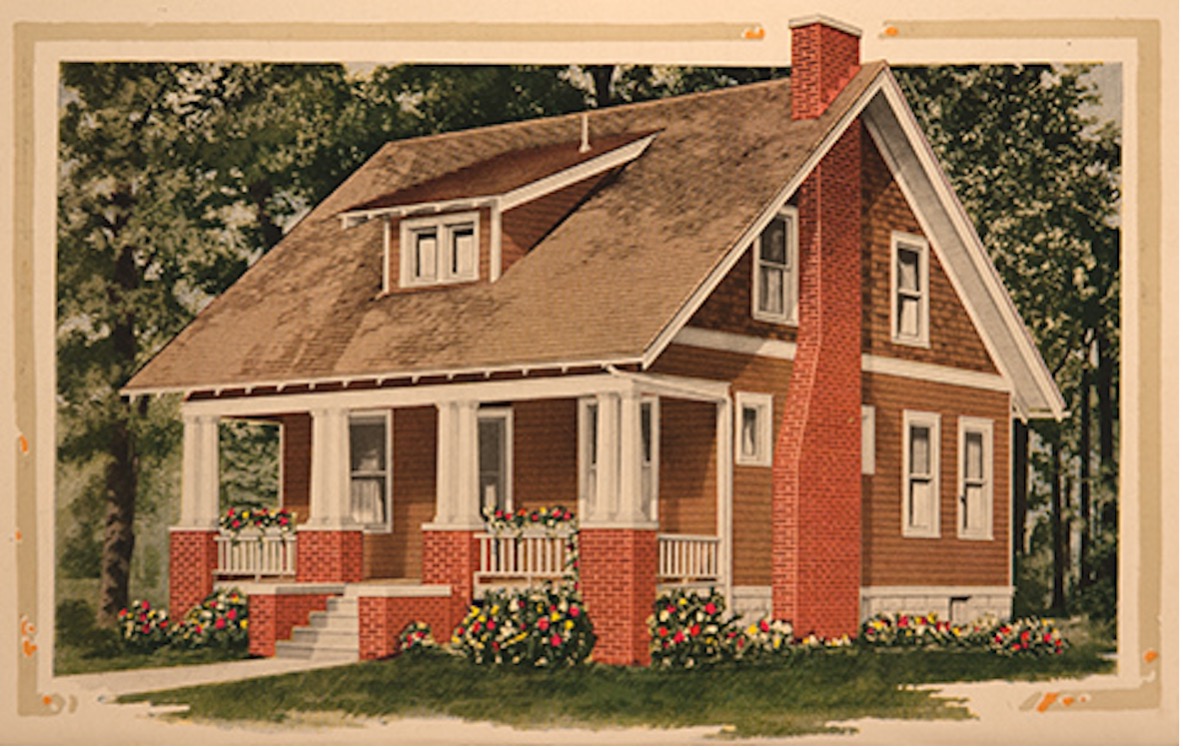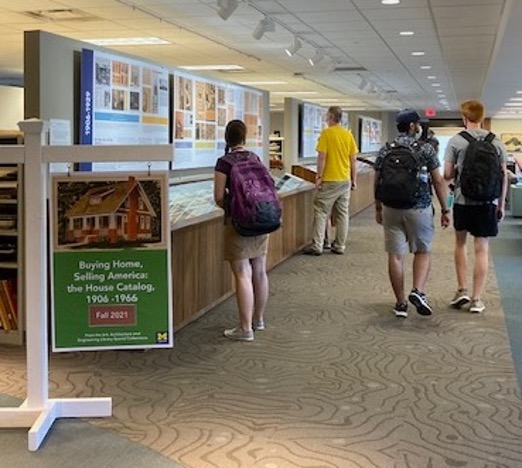Using Collections to Promote Student Engagement
Lucy Campbell and Barbara Opar, column editors
Column by Rebecca Price, Architecture, Urban Planning and Visual Resources Librarian University of Michigan
Many thanks to the AASL Column Editors for the opportunity to share this short essay, condensed from a presentation given at the 2022 (virtual) AASL Conference.
The past few years have seen a significant increase in efforts to engage students in the work of the library. Why do we care if students engage in our libraries, our services, and our collections? A cursory look at the literature on student engagement in the academic library reveals that student engagement can mean many things: partnership, involvement in choices, or participation in instruction and in academic goal setting. Throughout the literature is a presumption that engaged students see more value in their education and are more likely to stick with it. One could argue that student engagement has developed on the heels of the commodification of education. Increasingly educators are called upon to quantify the value and thereby justify the expense of education. As students become “co-owners” of their education, they perhaps perceive greater value. There is a supposition that an engaged student gains more value from their education; added to which is the tactile idea that an active student learns more than a passive student. Engagement is finding ways to activate, expand upon, and enrich the student experience and, as a bonus, to help the student develop marketable skills.
This brief essay describes an example of a project designed to engage students with primary source materials. The project was an effort to expose the University of Michigan Library’s House Catalog Collection, which focuses on the Midwest, and even more specifically, Michigan, as a center of the kit-house industry in the early to mid-twentieth century. The catalogs provide a portal to study a wealth of topics including residential design, construction materials and practices, the financing of home purchases, racism in the lending and housing industries, gender roles in the twentieth century American home, assembly line production, modular approaches to building, Michigan industries from lumber to automobile, advertising practices of the twentieth century, development of suburbia, etc. The breadth of themes, ranging from engineering to architecture, business, and numerous social science disciplines, shows that the catalogs offer an incredibly fertile soil to be cultivated. Yet, they sit quietly on the shelf in the “by appointment only” Special Collections room and in the catalog as individual titles waiting to be discovered by a researcher who produces just the right keyword. An exhibit is a way to expose and share this hidden collection.
An exhibit is also a way to involve students in our collections. Each year our library sponsors a Student Engagement Fellows program, providing an opportunity to engage students in the work of the library. The program allows a librarian to hire one or two students for a semester and a half, during which time the students are expected to work eight to twelve hours per week. The librarian supervises their work, but the students are paid through the program. Proposals are made public in the first week of the fall semester. Interviews occur in mid-September and students are selected and can begin working in early October with the goal of completing the project by the end of winter semester in mid-April. After interviewing about a dozen students, it became clear that there were three who would be ideal to have on the project – a master’s student in architecture, a senior in the art and design school, and a junior in the environmental sciences program – each bringing a particular perspective, as well as individual strengths, skills, and talents, and a shared passion for the catalogs. Due to the scope of the project, the program coordinator approved the hiring of all three students if each worked only six to ten hours per week. With the students’ agreement, a dream team was assembled.
The engagement proposal was two-fold: to prepare an exhibit that would expose a library collection and to provide the students an opportunity to develop skills in exhibition curation, including research, selection, interpretation, and presentation. We took a collaborative approach, with shared notes and bibliography, group interviews, and regular meetings. The students spent the first two months getting to know the collection and pulling out themes. It was agreed that the catalogs should speak for themselves. The process was inevitably messy, especially at first, and at times it was uncomfortable deciding what to say and how to say it; yet struggling with the complexities of the subject matter served to provide a rich, multi-perspective exhibit.
The team formulated a plan and a necessarily ambitious timeline with an opening date of March 19, 2020.* In November and December themes were finalized and the team decided on a chronological approach, with each student taking a span of time with themes carried from beginning to end. By early December the students had selected about seventy-five catalogs for display. By the end January the students had their texts ready, and the catalogs were sent to the library’s preservation unit for exhibit preparations. Final edits to the texts were made in early February, so that the display posters could be ready by the mid-March opening date.
While the students acquired skills related to exhibition curation, most impressive was how they all grappled with and came away with a much deeper understanding of the work of a library, particularly of the intentionality behind our collections. Even librarians do not always recognize the power in that and the capacity we have as stewards of our collections to shape and influence scholarly research and communication.
A few words and thoughts from the students reiterate this message: the art and design student wrote in a blog post at the conclusion of the project: “This project was also a huge exercise in how to theorize history. While we had faith that the catalogs would be able to speak for themselves, we also struggled with how to convey the urgency of the story the collection tells.” By urgency she is referring to the seriousness of the themes, such as: racism in (sub)urban development and financing, technology as savior or as plague, the single-family home as a debatable housing solution, and abundance versus depletion of natural resources. She continued, “We didn’t want it to be a nostalgic survey of the “American dream.” … We wanted to present an exhibition which demonstrates how the library can be used as a vehicle to not only tell turbulent stories, but also to equip its visitors with sharper “reading” skills going forward.”
The students came away from the engagement experience with an awareness of the underlying intentionality of a collection and an increased understanding of the impact of choices that are made in the creation, description, and presentation of collections. The librarian came away from the project with a renewed appreciation for the perspective, hard work, and passion of the students.
*Due to the pandemic, the opening did not take place as planned. We had to cancel all plans for programming and the exhibit opened in the fall of 2021.

The Detroit Model, Aladdin Homes: sold by the “golden rule” Bay City, Michigan, 1922

The exhibit, Buying Home, Selling America: the House Catalog, 1906-1996, on view
Questions
Heather Albarazi
Digital Marketing & Communications Manager
202-785-2324
halbarazi@acsa-arch.org

 Study Architecture
Study Architecture  ProPEL
ProPEL 